#Fudoki
Explore tagged Tumblr posts
Photo
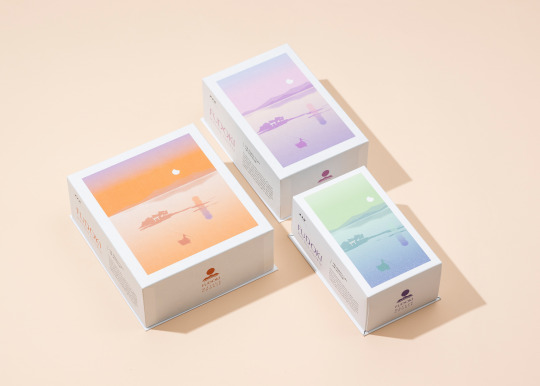

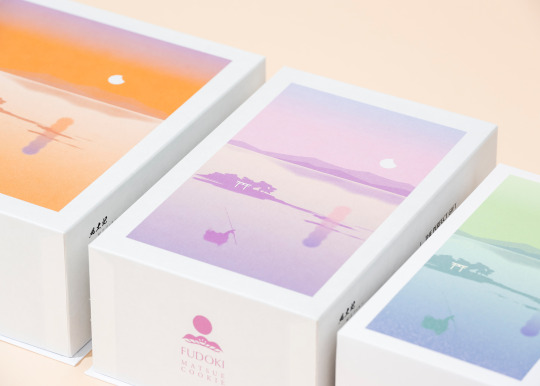
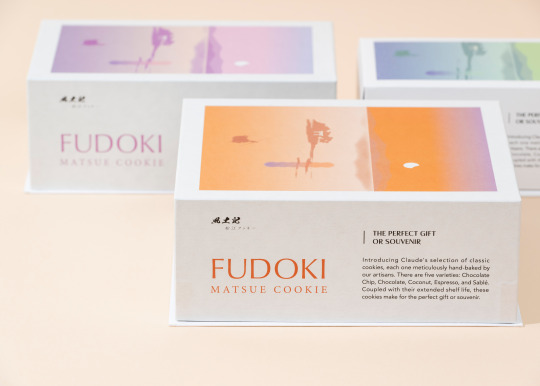

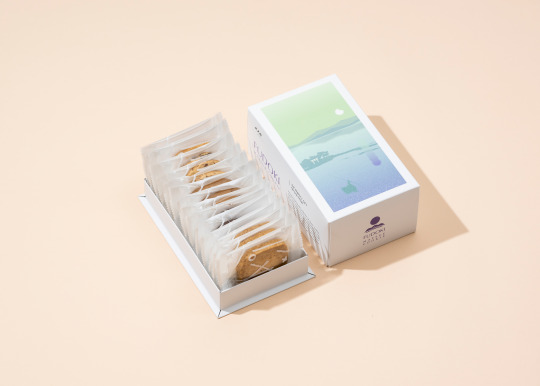
松江のお菓子屋さんクロードのクッキー詰め合わせ「風土記」のパッケージデザインと宍道湖のオリジナルイラストレーション。
#package design#graphic design#Illustration#branding#art direction#claude#クロード#松江#matsue#菓子#クッキー#cookie#baked goods#風土記#fudoki#japanese sweets#japanese design#japanese confectionery#宍道湖#パッケージデザイン#神戸#Shinichi arita#shuttle#シャトル#グラフィックデザイン#イラスト
40 notes
·
View notes
Text
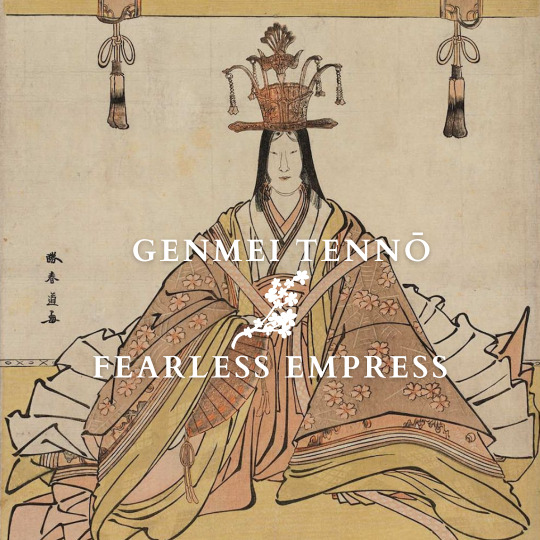
Genmei (661-721) was Japan's fourth empress regnant. She was Empress Jitō's half-sister and her match in terms of ambition and political skills. Her rule was characterized by a development of culture and innovations.
Ruling after her son
Like Jitō (645-703), Genmei was the daughter of Emperor Tenji but was born from a different mother. Jitō was both her half-sister and mother-in-law since Genmei had married the empress’ son, Prince Kusakabe (662-689). She had a son with him, Emperor Monmu (683-707).
Kusakabe died early and never reigned, which led to Jitō's enthronement. The empress was then succeeded by her grandson Monmu. The latter’s reign was short. In his last will, he called for his mother to succeed him in accordance with the “immutable law” of her father Tenji. Genmei accepted.
Steadfast and ambitious
Genmei was made from the same mold as her half-sister. She proved to be a fearless sovereign, undeterred by military crises.
She pursued Jitō's policies, strengthening the central administration and keeping the power in imperial hands. Among her decisions were the proscription of runaway peasants and the restriction of private ownership of mountain and field properties by the nobility and Buddhist temples.
Another of her achievements was transferring the capital at Heijō-kyō (Nara) in 710, turning it into an unprecedented cultural and political center. Her rule saw many innovations. Among them were the first attempt to replace the barter system with the Wadō copper coins, new techniques for making brocade twills and dyeing and the settlement of experimental dairy farmers.
A protector of culture
Genmei sponsored many cultural projects. The first was the Kojiki, written in 712 it told Japan’s history from mythological origins to the current rulers. In its preface, the editor Ō no Yasumaro praised the empress:
“Her Imperial Majesty…illumines the univers…Ruling in the Purple Pavillion, her virtue extends to the limit of the horses’ hoof-prints…It must be saif that her fame is greater than that of Emperor Yü and her virtue surpasses that of Emperor Tang (legendary emperors of China)”.
In 713, she ordered the local governments to collect local legends and oral traditions as well as information about the soil, weather, products and geological and zoological features. Those local gazetteers (Fudoki) were an invaluable source of Japan’s ancient tradition.
Several of Genmei’s poems are included in the Man'yōshū anthology, including a reply by one of the court ladies.
Listen to the sounds of the warriors' elbow-guards;
Our captain must be ranging the shields to drill the troops.
– Genmei Tennō
Reply:
Be not concerned, O my Sovereign;
Am I not here,
I, whom the ancestral gods endowed with life,
Next of kin to yourself
– Minabe-hime
From mother to daughter
Genmei abdicated in 715 and passed the throne to her daughter, empress Genshō (680-748) instead of her sickly grandson prince Obito. This was an unprecedented situation, making the Nara period the pinnacle of female monarchy in Japan.
Genmei would oversee state affairs until she died in 721. Before her death, she shaved her head and became a nun, becoming the first Japanese monarch to take Buddhist vows and establishing a long tradition.
Feel free to check out my Ko-Fi if you like what I do! Your support would be greatly appreciated.
Further reading
Shillony Ben-Ami, Enigma of the Emperors Sacred Subservience in Japanese History
Tsurumi Patricia E., “Japan’s early female emperors”
Aoki Michiko Y., "Jitō Tennō, the female sovereign",in: Mulhern Chieko Irie (ed.), Heroic with grace legendary women of Japan
#history#women in history#women's history#japan#japanese history#empress genmei#japanese empresses#historical figures#historyedit#herstory#nara#japanese art#japanese prints
208 notes
·
View notes
Text
Basic resources for people interested in Shintō
Resources in English:
Mythological text "Kojiki": translated by Donald L. Philippi (Princeton University Press, 1969); translation by Basil Hall Chamberlain online
Mythological text "Nihongi": translated by William George Aston (London, 1956); 1896 version online
Historical account including mythology "Izumo fudoki": translated by Michiko Yamaguchi Aoki (Tokyo, 1971)
Online Encyclopedia of Shinto (EoS) by Kokugakuin University
Resources in German:
"Kojiki" - deutsche Übersetzung von Klaus J. Antoni (Berlin, 2012)
"Nihongi" - deutsche Übersetzung von Karl Florenz (1901), Link
"Die Mythen des alten Japan" von Nelly Naumann (Köln, 2011)
"Die einheimische Religion Japans - Teil 1: Bis zum Ende der Heian-Zeit" von Nelly Naumann (Leiden/Niederlande, 1988)
"Shintō - Eine Einführung" von Ernst Lokowandt (München, 2001)
NOTE: Aston, Chamberlain and Florenz are very biased due to their time period and nationality so take their interpretations with a grain of salt! Also, most of these researchers are white and non-Japanese so they might be biased as well!
#shintō#shinto#shintou#kami#japanese mythology#mythology#shintology#japanology#academia#academic resources
32 notes
·
View notes
Text
Mimusubi Essays on Shinto
By David Chart
An author who writes independently about Shinto and also translates for the Shinto Organizations in Japan, Jinja Honchō (Association of Shrines).
Bolding ones I definitely want to read but I'll probably buy the bundle on Kindle when I get around to reading them.
Myths of Izumo | 36
The Daijosai | 34
Izumo Ōyashiro and Miho Jinja | 33
Oharaëkotoba Izumo Yogoto | 55
Shinto Practice for Non-Japanese | 35
Imperial Origin Myths | 36
Offerings For The Kami | 37
Explaining Shinto | 31
Myths of Jinmu Tennō | 33
Myths of Creation and Amaterasu | 37
Myths of the First Emperors | ?
The Early History of Shinto | 26
Suinin Tennō and Yamato Takeru | 44
Myths of Okinagatarashihimë | 40
Shinto Liturgy | 44
Myths from Izumo Fudoki | 43
Myths from the Hitachi Fudoki | 41
Shinto on Ethics and Death | 43
Myths of the Harima Fudoki | 67
Myths from the Bungo & Hizen Fudoki | 50
Shinto Portrayals in Manga | 40
The pages don't seem to match up to the Kindle book pages so I'm assuming it the pages in the paperbacks, or maybe inaccurate. Total pages is 805 (missing 1 essay)
The Essays — Link
Amazon Profile — Link
Blog Mimusubi — Link
8 notes
·
View notes
Photo

Kazuo Shiraga
Fudoki
, 1988
oil on canvas
180 notes
·
View notes
Text
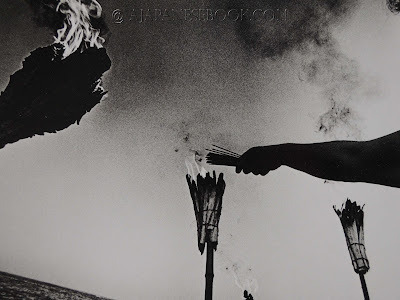
by Kusukazu Uraguchi / 浦口楠一 From the book: Shima Fudoki / 志摩風土記,1978
35 notes
·
View notes
Text
Round 1 Poll 44
Oumitsunu The giant of Izumo-no-kuni Fudoki, or Records of Izumo. He performed the Kuni-biki, roping in land from the opposing Silla, in an effort to expand Izumo.
Koppa Tengu A type of tengu. Their spiritual power is weaker than other tengu, so they are much smaller. They are said to be the reincarnations of long-lived wolves.


5 notes
·
View notes
Text
Rambling About Inari Okami, foxes and a bit of Shinto.


Kazuma Kaneko's Inari: Ukamo Mitama, and the Fushimi Inari Temple in Kyoto, picture taken by my best friend!
Hey, this was not planned to be a post of my Compendium Entries series, and it will not be. As a friend of mine who is a designer started a work with the Inari as inspiration, and my best friend visited a shrine in Japan, i got curious and studied this deity a bit, and wanted an excuse to ramble about it! Still, it was not enough research to enter the Compendium, and also i think i have spent a lot of time in Asia in this series. So, while we are moving from the continent, let's add Inari as a side note, because it is such an interesting kami!
But as always... Don't make me tap the sign...
Warning: Faith and religion are important real life topics, that tackles the culture and way of life of millions of real life people. It is a cultural expression, and must be respected by all means. Here, we use a video-game series only to ignite the flame of learning about the matter, using its art when well depicted, but we do this with all due respect to the cultures we talk here, grounded by real life sources, cultures and people. And i mean this with respect. Hope you all enjoy.
The Identity of the Inari
On contrary on what many could think, Inari is not a name associated to one god. But rather, it is like a title to many kami! Inari is not necessarily a fox entity as well! But their true identity ca be a bit complex. But what do end up in every interpretation, is that Inari is related to prosperity, fertility and food.
What really gets me is that... Inari is not one Kami, but rather many!
Since it will vary depending on what time, place and culture you are inserted in, Inari has many faces. According to the book ''The Rice Goddess and Fox In Japanese Religion and Folk Pratice'' There is a version of the tale that tells about a time o great hunger in ancient Japan, when Inari descent from the heavens mounting a big white fox. She brought forth the grains capable to grow in the swampy soil at the time, and so that saved Japan.
I could not find more about this version, only that it is being parroted over the internet for a while, but let's give the benefit of doubt here because you know... language barriers.
The name Inari was originally written in many forms, and with many meanings. According to the Fushimi Inari Taisha temple (more on that later) there are many examples like that, like for example the Inari being mentioned in the Ymashirokoku Fudoki, a cultural report on Japanese provinces finished in the year 713. The most modern way to write and the meaning of Inari, seemed to have originated in the year 827. [1]
The Cultural Alliance Brazil-Japan (A government organization focused in cultural exchange between both countries) says that Inari has many interpretations. And indeed, if there's a thing you notice researching the Inari, is that theres no consensus on its interpretation.
They mention some interpretations like an old man with beard with two white foxes, or a woman with two bags of rice riding a big white fox. But they are also frequently associated and confused with the foxes that adorn their shrines.
The Inari are very popular in Japan! It has a large variety of temples and shrines, being revered by people and organizations that pray for prosperity. The main Inari shrine is located in Kyoto, the Fushini Inari temple. It's main features are the thousands of Tori, and fox statues.
Thankfully they have an English site for you to visit and read about this temple. A neat thing that i learned is that this temple was built in the year 711, which means it is more than 1300 years old! That's older than anything in my home country! my best friend was there, and took some great pictures!

Inside the thousands of Tori in the Fushimi Inari Taisha temple! Picture by my friend!
According to the temple's site, there are shrines to the Kami: UIkanomitama, Satahiko, Omiyanome, Tanaka no Okami, and Shino Okami in the Fushimi Inari. They are all Kami going by the Inari title, and being revered as such.
In my researches i got the name Ukanomitama quite often! You will also see them a lot, because it is one of the most associated Kami with the Inari. Ukanomitama has two origins, as long as i could find:
The first came from the Japanese ancient book of the Nihongi, written in the year 697 is one of the oldest Japanese written works, and still is of immense cultural importance to the Japanese culture. Some famous Kami and Yokai came from there!
But Ukanomitama also did. In this book, in only one verse, it narrates how it was born from Izanagi and Izanami's hunger. You can read the entirety of the work, or some parts translated to English here:
Link to the Nihongi
The other source for Ukanomitama cames from the book Kaijiki, which is also more or less from this period of time. Around the 8th and 7th century. In this version, the change is that this Kami was born from Susanoo.
Either way, Ukanomitama ended up associated as a food Kami, an entity to end hunger, which made it considered an Inari, being even enshrined in the main Inari temple.
To go deep into the Inari identity, i came forth to the famous site Living With Kami, which belongs to a Shinto Pristress and Professor on the topic! Luckily she had a few articles to talk about Inari, which is no surprise due to the Inari's popularity.
(This site is pretty awesome, with tons of amazing knowledge about Shinto. You should take a look if that interests you!)
According to the Pristress, theres not ONE Inari no Okami, but as we discussed before, that's kinda like a title. Therefore, all Kami enshrined at Fushimi Inari, for example, are Inari no Okami. This includes our friend Ukanomitama!
Still according to her, Inari are, in some times and places, associated as a shapeshifter entity, possessing no defined gender or physical appearance.
Theres no definitive answer on this matter, and will depends on the person you ask, their fate, their culture, their place, etc... So, Inari is pretty much a group of Kami.
In Takkekoma Inari, the second biggest and oldest temple dedicated to the Inari, other two Kami are enshrined: Ukemochi and Wakumusubi.
The foxes, the red and the devils
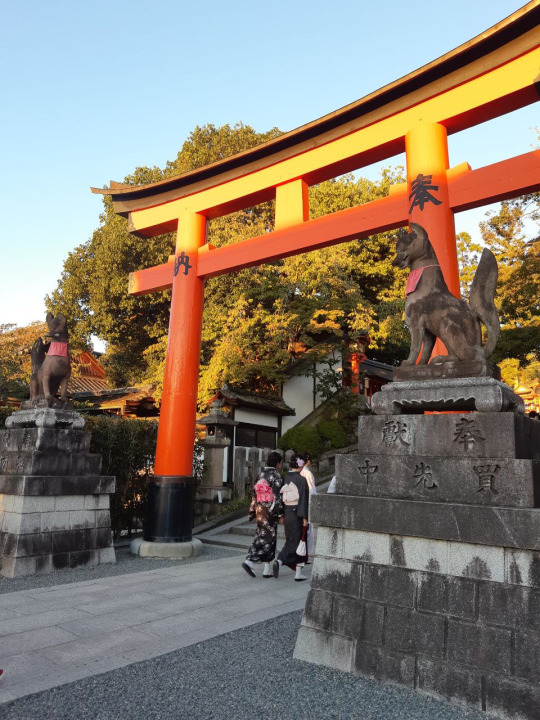
Another great picture from my friend!
For us westerns, and in pop culture, The Inari are almost always associated to foxes, and even became foxes some times. But still according to the Fushimi Inari temple, the Inari are not necessarily taking the form of a fox, but rather they are affiliated with the foxes. They symbolize the Inari and act as their messengers, that's why people pray to the foxes and give offerings to them.
They could be Kitsune, which are a relative term to supernatural foxes, not only a Yokai, but there is also no consensus on this either. They are not regular foxes, that's for sure.
They are time to time confused with generic Kitsunes or the Inari themselves, its normal that it all became mixed. Specially because of the worldwide popularity of this Kami.
For my personal interpretation, since Kitsunes are supernatural foxes, and the Inari foxes are supernatural, (I know, that's not a very good explanation) i believe every Inari fox is a Kitsune, but not every kitsune could be a Inari fox.
There's a fun trivia about the Inari foxes and food, which is fitting: again according to the Japan-Brazil Cultural Alliance, the offerings to the Inari foxes are usually Abura Age, some type of beans dish. That's said to be the foxes favorite food! So much so, that there is a type of Sushi made using Abura Age, called Inarizushi!
The Japan-Brazilian association of earlier, also talks about a theory that foxes are associated with rice, due to their apparitions in rice fields during harvest seasons. This is debatable inside folkloric studies of Japan.
The other thing that is very much associated with the Inari, is the red cloths that they are usually wearing, most commonly on statues, but some times they have red details in their bodies as well. The red details can be seen on the fox masks people usually wears during festivals.
But why the color red? What does it mean, and where it came from?
The red cloth they wear often is interpreted starting as people putting it on Inari foxes statues to ask protection for their families. Accoring to the Fushimi Inari Taisha, quoting them directly:
''Vermilion red is considered an amulet against evil forces, and is used in many ancient palaces, shrines and temples. At Fushimi Inari Taisha, it is described as a color that expresses bountiful harvests that Inari Okami gives us, but vermilion red is used for many other shrines too. The pigment used for vermilion red buildings like this is made from mercury and red earth. This mixture has been used to preserve wood since ancient times.'' -FAQ Fushimi Inari Taisha.
According to Onmarkproductions (a pretty amazing website that works as a dictionary for buddhist and shinto faith) Red has been associated with specifically the Kami of Smallpox Hosokami. (疱瘡神) Small pox has been first recorded in Japan in the Nikon Shoki (日本書紀). This was around the year 720 A.D. It is thought that the disease reached Japan much earlier, at the year 550. As many of you already know, it was a very deadly disease and it inspired fear in many.
The Japanese started recommending that children with Smallpox were to be clothed in red clothing, as the ones carrying the sick as well.
Still at this source, many Japanese folk beliefs regarded Red as a color for ''expelling demons and illness.'' For example, the rituals of spirit quelling taken by the Yamato court during the Asuka period (522-645 AD), were mostly centered around the Fire God (a red deity).
As the time passed, and the red color was used more and more for this purpose, the symbolism to sickness was replaced by red signifying life creating and life sustaining powers, so the red started to pop in at deities that were related to fertilit and healing. This is the case of Inari!
But the curious part is that, this is not exclusive to Japan! It seems that in other parts of the world, the red color was also associated to sickness and sickness cleansing. For instance, the Queen Elizabeth I of England, when infected with Smallpox, was exposed to the color red. In the Yoruba mythology, the measles god Sopona was associated to the color red as well. Personally, i can't explain exactly why those beliefs were so similar being so far apart, i think there is much research into human consciousness to be able to decipher this phenomena. But it is nonetheless very interesting indeed!
in short, that was the reason Inari foxes wear the red scarfs! I find them cute.

Africa, Europe, Asia: All had their forms to use red against sickness
In conclusion: Inari is not a singular entity, and they are multitudes, enshrined by those asking for prosperity. It took me in a big rabbit hole of the red color, and sickness gods and demons, and i thought it would be cool to take you guys along!
In the end, my best friend provided me with great pictures to illustrate this text, and my other friend ended up creating amazing designs using the Inari motif. It seems that even millennia passing, Inari keeps influencing the Human mind to this very day.

In case you got curious, here is one of my friend's Inari designs!
My designer friend contact info, in case his work catch your eyes!
Sources: -The Rice Goddess and Fox In Japanese Religion and Folk Pratice
-Fushimi inari Taisha temple [1]
-The Nihongi
-Nikon Shogi
-Living With Kami
-onmarkproductions.com
#mythology#shinto#Inari#Kami#kitsune#foxes#shin megami tensei#kazuma kaneko#Inari Okami#japanese folklore#folklore#Japan#japanese culture
65 notes
·
View notes
Text
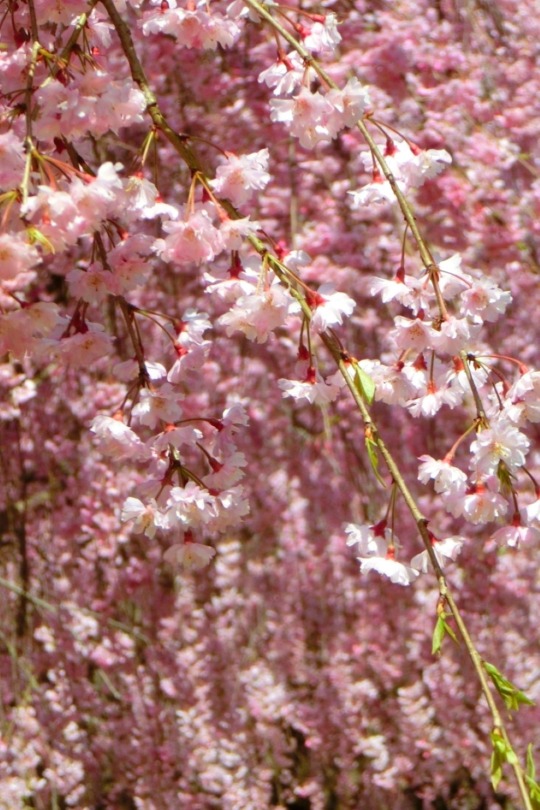
Cherry Blossoms, Hitachi Fudoki no Oka, Ishioka, Ibaraki, Japan, 桜, 常陸風土記の丘, 石岡市, 茨城
2 notes
·
View notes
Text
Chapter 2: Kami Shrines, Myths, and Rituals in Premodern Times
Early Shrine Cults
Perhaps the most common ancient prototype of today’s shrines was an open-air site of seasonal worship, located at the boundary between the human realm where crops were grown and the chaos beyond it…
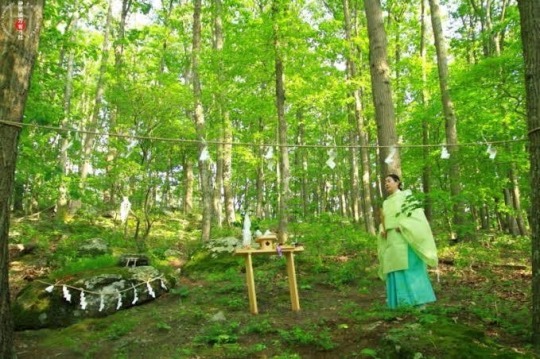
…At the mountain entrance he planted a stick in a ditch as a mark, and he announced to the yato-no-kami: “We shall give the land above this stick to you, as the domain of the kami, but the land below it will be turned into rice fields for the people. I shall become a priest [hafuri] of the kami, and I shall revere and worship you in all eternity. I pray do not strike us; do not bear a grudge against us!” He set up a yashiro and did worship there for the first time.
(Hitachi-no-kuni fudoki, NKBT 2: 54-5)
This tale is recorded in a gazetteer (fudoki)… It depicts the kami as the original owners of the land. They are dangerous and violent and allow the people to live on the land only if soothed with offerings and prayers… By a combination of force and negotiation, Malachi conquered agricultural land from the kami… His worship of the kami at a sacred place, yelled a yashiro, makes it possible to grow the rice on which the people depend. This yashiro (a word that means “temporary shelter”) was not a permanent “shrine” inhabited by a kami; rather, it was a demarcated site where seasonal ceremonies took place. The kami dwelt in the natural world beyond the human realm, and were invited to this site on the border between these two worlds only for the duration of the offering ritual… the act of making offerings to the kami on behalf of “the people” was intimately linked with political leadership, and it served to validate “taxation” — control over the agricultural surplus by chieftains who acted a mediators between the community and the greater forces that threatened it from outside.
—Pages 24-26
…In the course of these centuries Japan slowly evolved into a centered political unit governed by the so-called Yamato dynasty… the expansion of that early state into the north of the main island Honshū… it is presented in terms of a confrontation between the primitive deities of the land and a much more powerful type of kami:
Maro of the Mibu-no-muraji took control over this valley… the yato-no-kami… would not leave. Maro raised his voice and demanded: “The purposed of this pond is to give life to the people. Are you heavenly deities or earthly deities, you who resist the imperial will?”… “Do not fear them.” Instantly, the ghostly snakes disappeared
(NKBT 2: 56-7)
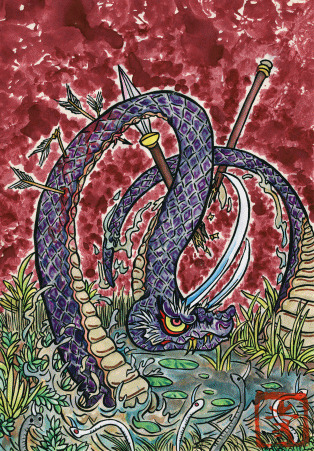
Maro’s conquest of Hitachi revealed that the Yahazu were only as powerful as the deities they worshiped. As “earthly” deities, these “ghostly snakes” stood no chance when confronted with the heavenly might of the imperial court… they made sure that it conveyed a new message: the court does better at “giving life to the people” than the Yahazu because imperial power is heavenly power.
—Pages 26-27
0 notes
Text
Mount Fuji, Japanese Fuji-san, also spelled Fujisan, also called Fujiyama or Fuji no Yama, highest mountain in Japan. It rises to 12,388 feet (3,776 metres) near the Pacific Ocean coast in Yamanashi and Shizuoka ken (prefectures) of central Honshu, about 60 miles (100 km) west of the Tokyo-Yokohama metropolitan area. It is a volcano that has been dormant since its last eruption, in 1707, but is still generally classified as active by geologists. The mountain is the major feature of Fuji-Hakone-Izu National Park (1936), and it is at the centre of a🏛️UNESCO🏛️World Heritage site designated in 2013.
Cultural significance
The origin of the mountain’s name is uncertain. It first appears as Fuji no Yama in Hitachi no kuni fudoki (713 CE), an early government record. Among the several theories about the source of the name is that it is derived from an Ainu term meaning “fire,” coupled with san, the Japanese word for “mountain.” The Chinese ideograms (kanji) now used to write Fuji connote more of a sense of good fortune or well-being. In the present day the Japanese typically refer to the mountain as Fujisan, whereas foreign visitors tend to refer to the mountain somewhat incorrectly as Mount Fujiyama, which translates to “Mount Fuji mountain” in the Japanese language.
instagram
0 notes
Text

Complete his Confidant (Emperor) and it evolves into Kamu Susano-o. A japanese god found in the Izumi Fudoki. He was one of the three gods born from Izanagi. He was a violent ruffian, but also has a sensitive side, showing love for his mother and reading poems.
0 notes
Text
The Japan You Don't Know…Photos of Japan 100 years ago. It became the second home of rice wholesalers
Hamadayama Inari Daimyojin 3-4-2 Hamadayama, Suginami-ku, Tokyo
A quiet residential area in Hamadayama. The sanctuary, almost casually passing by, was filled with a purity of air that words cannot describe. It is a god who has seen the history of Hamadayama.
Suginami Fudoki" by Yasuki Mori. Suginami Local History Association HamadayamaThis area, on the north side of the Kanda River, is Hamadayama. The name Hamadayama comes from Yahei Hamadaya, a merchant in Naito Shinjuku during the Edo period. Hamadaya seems to have had a forest of pine trees and cedar trees (called "mountain" in this area) in the area around the Suginami-minami Post Office in Hamadayama 4-chome. The Hamadaya family visited the area on the far bank of the river and distributed sweets and money to the village children to make offerings to the Buddha. Hamadaya failed in the rice market in the Meiji era (1868-1912) and fell into ruin, but Hamadayama remained as a small family name, according to the story.
youtube
0 notes
Text
Tắm Suối Nước Nóng Yoko Onsen Quang Hanh Quảng Ninh chuẩn Nhật Bản
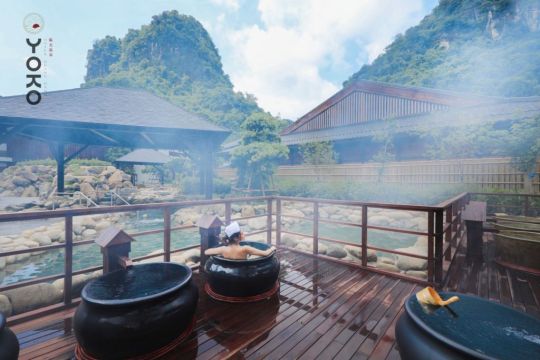
Một trong những trải nghiệm nhất định phải thử khi du lịch Nhật Bản chính là ngâm mình vào suối nước nóng Onsen. Hiện nay, bạn không cần phải tới Nhật xa xôi để tắm Onsen nữa vì du lịch Quảng Ninh cũng có dịch vụ tắm Onsen rồi đây. Cùng Timnhanh.com.vn trải nghiệm tắm suối nước nóng Yoko Onsen Quang Hanh Quảng Ninh lớn nhất nhì Việt Nam này nhé! Lưu ý: Bài viết có sử dụng ảnh và tư liệu từ fanpage chính thức của Yoko Onsen Quảng Ninh. Địa chỉ Fanpage: https://www.facebook.com/yokoonsenquanghanh/ 1. Đôi nét về tắm Onsen Nhật Bản Giới thiệu tắm Onsen Nhật Bản Nếu đã từng xem những bộ phim hay tìm hiểu về văn hóa Nhật Bản chắc hẳn bạn sẽ không còn lạ lẫm với hình ảnh người Nhật ngâm mình trong những bể nước nóng. Người Nhật gọi đây là tắm Onsen. Onsen đọc theo âm Hán là “Ôn Tuyền”, trong đó “Ôn” có nghĩa là “nóng” còn “Tuyền” có nghĩa là “suối”. Onsen là suối nước nóng hoàn toàn tự nhiên. Các suối này được hình thành từ những ngọn núi lửa đã tắt hoặc vẫn còn hoạt động. Điểm nổi bật của suối nước nóng Onsen chính là nước khoáng nguyên chất, đem lại nhiều lợi ích đối với sức khỏe. Nguồn gốc của Onsen đã có từ thời Edo. Các Samurai sẽ phải khỏa thân 100% khi xuống tắm để đảm bảo với đối thủ của họ rằng mình không mang theo vũ khí. Mọi rào cản về địa vị xã hội, giới tính hay tuổi tác đều sẽ được xóa bỏ hoàn toàn. Tắm Onsen là một nét văn hóa đặc trưng không thể thiếu của người dân xứ mặt trời mọc. Lợi ích của việc tắm suối nước nóng Onsen Khoa học đã chứng minh được những tác dụng kỳ diệu từ thiên nhiên của nước khoáng nóng đối với sức khỏe và sắc đẹp. Tắm khóa nóng Onsen được coi như một phương pháp trị liệu sức khỏe kỳ diệu dành cho bạn. Xua tan những cơn đau nhức Trong cuốn sách Izumo no Kuni Fudoki của Nhật Bản đã viết rằng: “Tắm suối khoáng một lần sẽ làm sạch làn da, tắm liên tục sẽ chữa được tất cả những cơn đau nhức, đây là nước của các vị thần”. Có thể bạn chưa biết, trong suối nước nóng có chứa các ion, khi ngâm mình trong onsen các ion này sẽ thẩm thấu qua da giúp cân bằng điện giải, xua tan những cơn đau nhức mỏi thần kinh và các khớp. Chỉ cần sau một buổi thư giãn trong suối nước nóng, không những tinh thần được sảng khoái mà sức khỏe của mình cũng được cải thiện nhanh chóng. Đem lại làn da căng bóng, tràn đầy sức sống Vào mùa thu và mùa đông, thời tiết hanh khô sẽ làm làn da của bạn có thể bong tróc, khô khan, nứt nẻ,… cảm thấy khó chịu, nhưng nếu được dưỡng ẩm bằng dưỡng chất của nguồn khoáng nóng, da bạn sẽ ngay tức thì trở lên căng bóng và khỏe mạnh. Đặc biệt, nguồn khoáng nóng ở Yoko có độ pH trung tính sẽ thích ứng với mọi loại da, ngay cả khi bạn sở hữu một làn da nhạy cảm. Đến với Yoko, để có được trải nghiệm tuyệt vời nhất cho làn da của bạn, thì sau khi tắm khoáng nóng, bạn đừng quên bỏ qua những dịch vụ Massage và Spa ở nơi này. Bạn sẽ được chăm sóc làn da bằng dòng mỹ phẩm thiên nhiên số 1 ở đất nước Phù Tang là Naris. Sản phẩm được tinh chế từ sự kết hợp những thảo dược quý giá trong núi Rocko và nước ở núi tuyết tan ra, đảm bảo sự an toàn tuyệt đối cho sức khỏe của bạn. Ngủ ngon, giảm stress Trước khi đi ngủ, nếu bạn thả mình trong nguồn suối khoáng nóng, cơ thể bạn như được xoa dịu nhẹ nhàng bằng những dưỡng chất từ thiên nhiên. Mạch máu và các dây thần kinh trên cơ thể giãn ra, máu được lưu thông nhanh chóng, những mệt mỏi căng thẳng, đau nhức của cơ thể bạn sẽ được xua tan và bạn sẽ chìm vào giấc ngủ sâu ngon lành. Vì vậy, với những người thường xuyên gặp phải vấn đề về giấc ngủ hay mất ngủ, hoặc stress kéo dài thì tắm Onsen chính là một “thần dược” giúp bạn cải thiện tình trạng này một cách đáng kể. Ảnh: ST 2. Đến Yoko Onsen Quảng Ninh, tắm khoáng nóng chuẩn Nhật Bản Giới thiệu Yoko Quang Hanh Quảng Ninh - Địa chỉ: Tổ 5, Khu 9B, Quang Hanh, Cẩm Phả, Quảng Ninh - Điện thoại: 0333668777 - Email: - Website: http://yokoonsenquanghanh.com.vn Gần đây, team mê xê dịch lại được dịp phát cuồng với địa điểm tắm Onsen đậm chất xứ Phù Tang mới toanh giữa lòng Quảng Ninh. Yoko Onsen Quang Hanh tọa lạc ở khu 9B, Quang Hanh, thành phố Cẩm Phả (Quảng Ninh), cách Hạ Long khoảng 30km. Từ thành phố Hà Nội để di chuyển tới đây sẽ mất khoảng 2 giờ đi xe. Sau hơn 2 năm xây dựng, Khu nghỉ dưỡng khoáng nóng cao cấp Quang Hanh đã chính thức đi vào hoạt động từ ngày 23/5 vừa qua. Được biết, đây là khu nghỉ dưỡng theo phong cách Nhật Bản đầu tiên ở Việt Nam. Đặc biệt, Yoko Onsen Quang Hanh còn là một địa điểm tắm Onsen đậm chất Nhật lớn nhất nhì Việt Nam. Onsen được xây dựng là một tổ hợp nghỉ dưỡng 5 sao mang phong cách Nhật Bản với nhiều dịch vụ khác nhau như: villa nghỉ dưỡng, khi tắm khoáng, xông đá kiểu Nhật, khu buffet trải nghiệm ẩm thực… Sơ đồ khu Yoko Onsen Quang Hanh Quảng Ninh 1. Quầy Lễ tân 2. Cafeteria 3. Khu Private Onsen 4. Quầy Bán vé 5. Khu gửi giày 6. Khu Ẩm thực 7. Locker Nữ 8. Khu tắm n�� 9. Public Onsen 10. Locker Nam 11. Khu tắm nam 12. Khu xông hơi 13. Spa 14. Phòng Mát-xa Thái 15. Phòng nghỉ chiếu Tatami 16. Phòng Chiếu phim 17. Quầy Kimono 18. Quầy Lưu niệm 19. Phòng Sinh hoạt chung 20. Phòng nghỉ chiếu Tatami Xem thêm video toàn cảnh về khu nghỉ dưỡng Yoko Onsen Quang Hanh: Hướng dẫn di chuyển đến Yoko Onsen Yoko Onsen Quang Hanh ở Quảng Ninh tọa lạc ở thành phố Cẩm Phả, cách Hạ Long khoảng 10km. Để trải nghiệm tắm nước nóng Onsen Quang Hanh, bạn sẽ di chuyển về thành phố Hạ Long rồi bắt taxi tới đây. Từ Hà Nội, bạn tới các bến xe lớn, ví dụ bến xe Mỹ Đình, Lương Yên, Gia Lâm. Sau đó, lựa chọn nhà xe uy tín như Kumho Việt Thanh, Hoàng Long, Ka Long… hoặc các nhà xe Limousine Hà Nội Quảng Ninh để di chuyển tới Hạ Long. Bạn cũng có thể lựa chọn di chuyển bằng phương tiện cá nhân nếu điều kiện cho phép. (Halo gợi ý: 10 Nhà xe limousine Hà Nội Quảng Ninh uy tín) Vì cách thành phố Hạ Long khoảng chừng 30km nên việc di chuyển khá đơn giản. Bạn có thể lựa chọn đi bằng nhiều phương tiện khác nhau: Di chuyển bằng xe taxi: Từ Hạ Long để di chuyển đến Yoko Onsen bạn sẽ phải đi với quãng đường gần 30km, giá tiền taxi với mỗi chặng là > 200k. Một vài hãng taxi uy tín ở Quảng Ninh có thể kể đến như: - Taxi Bãi Cháy: 02033.64.64.64 - Taxi Mai Linh: 0333.628.628 Halo gợi ý: 6 hãng taxi Hạ Long uy tín Di chuyển bằng ô tô riêng / phương tiện cá nhân: Từ Hà Nội bạn di chuyển theo hướng đường cao tốc Hà Nội – Hải Phòng. Sau đó tiếp tục đi theo hướng cao tốc Hải Phòng – Quảng Ninh. Sau khi đến thành phố Hạ Long sẽ di chuyển thêm 30km để đến khu Yoko Onsen. Bảng giá vé tắm Yoko Onsen Quang Hanh Vé vào cổng: - Khách có chiều cao dưới 1m: Miễn phí vào cổng - Khách có chiều cao từ 1m – 1m4: 300.000 VNĐ/ 1 người - Khách có chiều cao từ 1m4 trở lên: 500.000 VNĐ/ 1 người Vé cổng bao gồm vé các bể tắm khoáng, phòng xông hơi, phòng nghỉ công cộng, phòng đọc sách, phòng xem phim. Giá vé khu ẩm thực - Giá vé Buffet ẩm thực: từ 350.000 VNĐ/ người - Giá vé set menu gọi món: từ 150.000 VNĐ/ người Dịch vụ Massage và Spa - Dịch vụ Massage Thái: từ 350.000 VNĐ/ người - Dịch vụ triệu liệu riêng: từ 550.000 VNĐ/ người Các gói combo Lưu ý khi mua vé: - Khu Public Onsen (tắm công cộng) chỉ áp dụng cho người lớn & trẻ em có chiều cao từ 1.4m ~ 12 tuổi. Không áp dụng cho trẻ em dưới 12 tuổi (hoặc chiều cao dưới 1.4m). - Trẻ em từ 12 tuổi (hoặc chiều cao từ 1.4m) trở lên được tính là người lớn. - Trẻ em dưới 12 tuổi (hoặc chiều cao dưới 1.4m) sẽ chỉ được sử dụng dịch vụ tại khu Private Onsen. Xem thêm Kinh nghiệm: Du lịch Hạ Long 2 ngày 1 đêm 3. 8 Trải nghiệm khó quên khi tắm khoáng tại Yoko Onsen Quảng Ninh 1. Trải nghiệm tắm khoáng nóng tập thể tại khu Public Onsen Yoko Onsen Quang Hanh có tới 27 bể khoáng ở khu vực công cộng như: bể Carbornate, bể phản lực, bể tắm đá, bể tắm chum, bể sục, bể ngâm nước lạnh, nước nóng… giúp phù hợp với nhu cầu của nhiều người. Các bạn có thể tắm mỗi bể 10 phút để có thêm nhiều trải nghiệm hơn. Các bể tắm tại đây được trang bị hệ thống lọc liên tục. Nhờ đó, bạn có thể hoàn toàn yên tâm đến chất lượng của nguồn nước khi có nhiều người tắm chung. Dưới đây, Halo sẽ review một vài bể tắm được yêu thích: - Bể tắm chum Yoko Onsen: Đây là một loại bể tắm được thiết kế với hình dáng giống như các chum nước. Mỗi một bể sẽ chỉ chứa được 1 người nên nơi đây rất thích hợp với những ai muốn tìm không gian riêng tư. Nhờ không gian nhỏ nên hơi nước khoáng sẽ thẩm thấu vào từng tế bào, xua tan đi những mệt mỏi và đau nhức. - Tắm thác nước: Bể tắm thác nước cũng được rất nhiều người yêu thích và thường xuyên ghé tới. Theo như người dân Nhật Bản chia sẻ, tắm thác nước này giống như một nghi thức tẩy trần. Dòng nước chảy mạnh từ thác xối vào cơ thể sẽ mang đến cảm giác bạn đang được xoa bóp, massage vậy đó. Từ đó, toàn bộ cơ thể sẽ được thư giãn, giảm đau nhức xương khớp và đem đến một tinh thần sảng khoái. - Bể tắm bọt khí (bể Nano) Bể tắm bọt khí hay còn được biết đến với tên gọi khác là bể Nano. Với hệ thống tạo bọt khí ở Yoko Onsen được thiết kế ngầm trong bể sẽ tăng cường khả năng thẩm thấu, loại bỏ tế bào chết, cung cấp oxy cho cơ thể. Đặc biệt, bể bọt khí còn cực kì có lợi cho những người biến chứng tiểu đường bởi chúng có tác dụng làm giảm những triệu chứng khó chịu. 2. Trải nghiệm tắm khoáng nóng riêng tư ở căn Washitsu Nếu bạn muốn tìm một không gian thư giãn, riêng tư để tận hưởng sự yên bình thì hãy lựa chọn tắm tại phòng Washitsu (Private Onsen). Căn Washitsu tọa lạc ở giữa thung lũng ngập tràn cây xanh và gây ấn tượng với lối thiết kế mang đậm phong cách Nhật Bản truyền thống, gần gũi thiên nhiên. Các căn Washisu đều có bể tắm khoáng nóng được đặt ở trong nhà, ngoài trời và phòng xông hơi riêng biệt. Bên trong phòng nghỉ đều được trang bị đầy đủ những trang thiết bị hiện đại như Tivi, điều hòa 2 chiều, wifi 5 vạch miễn phí…. Đặc biệt, nếu nghỉ tại các căn Washitsu bạn còn được tận hưởng kì nghỉ dưỡng đẳng cấp 5 sao với những dịch vụ tuyệt vời. Nổi bật trong đó chính là những bữa sáng được chế biến bởi những vị đầu bếp Nhật Bản phục vụ ngay tại phòng. 3. Trải nghiệm tắm khoáng nóng ở bể tắm hang có 1-0-2 tại Yoko Hiện nay chỉ duy nhất ở Yoko Onsen bạn mới có thể trải nghiệm cảm giác ngâm mình trong bể tắm hang. Bể tắm được thiết kế lấy cảm hứng từ những hang động biệt lập. Điểm nổi bật của bể tắm hang chính là khả năng giữ nhiệt rất tốt. Theo như Yoko chia sẻ, nguồn nước khoáng tại đây có hàm lượng Brom hòa tan cao thứ 3 trên thế giới, nhờ có bể tắm hang nên chúng vẫn giữ được những dưỡng chất tuyệt vời nhất. Hướng dẫn cách tắm: Trước hết, bạn lấy 1 lượng nước nóng xối nhẹ lên phần bụng và ngực để cơ thể làm quen với nhiệt độ. Sau đó dần dần bước vào bể chậm rãi để thích nghi. Thả lỏng toàn bộ cơ thể để tận hưởng sự thư thái. 4. Trải nghiệm các phương pháp xông hơi - Xông hơi Loyly Một trong những dịch vụ đáng thử nhất khi đến Yoko Onsen chính là xông hơi theo phương pháp Loyly – một phương pháp có nguồn gốc từ Phần Lan. Loyly có nghĩa là dội nước. Nước được dội lên đá nóng để tạo ra hơi nước bốc lên. Xông hơi theo phương pháp này sẽ giúp mồ hôi toát ra và các độc tố trong cơ thể sẽ được thoát ra ngoài. Từ đó bạn sẽ cảm nhận rõ rệt sự căng mịn của làn da và giảm sự đau mỏi các khớp. Tuy nhiên, những bạn có tiền sử bệnh tim không nên ngồi ở khu vực xông hơi Loyly đâu nhé! - Xông lạnh: Rất ít nơi ở Việt Nam có dịch vụ xông lạnh. Chính vì vậy, khi đến Yoko Onsen Quang Hanh bạn nhất định phải thử trải nghiệm cảm giác xông lạnh nhé. Đặc biệt, xông lạnh cũng cực kì có ích đối với sức khỏe, nhất là với những ai muốn phục hồi những chấn thương và thể lực. Tuy nhiên, xông lạnh sẽ phù hợp hơn khi thời tiết của mùa hè hoặc mùa thu hơn. - Xông nóng: Nếu xông hơi Loyly được để ở ngoài trời thì các phòng xông nóng được thiết kế ở bên trong nhà. Xông hơi nóng có tác dụng tuyệt vời bởi chúng sẽ giúp cơ thể được đào thải độc tố, thoáng lỗ chân lông và cải thiện các mạch máu, tăng cường hệ thống miễn dịch của cơ thể nữa đó. - Xông đá muối Xông đá muối là một phương pháp khá thú vị mà bạn không nên bỏ lỡ ở Yoko Onsen Quang Hanh. Tới đây bạn sẽ được nằm trên những mặt đá được làm nóng. Việc xông đá muối sẽ giúp cơ thể được đào thải những độc tố bị tích tụ dưới da và giúp làn da trở nên sáng và hồng hào hơn rất nhiều. 5. Thưởng thức ẩm thực Nhật Bản tại Yoko Sau khi ngâm mình thư giãn trong bể khoảng nóng, bạn đừng vội bỏ qua khu Food Court với vô vàn các món ăn đang chờ đón. Tại đây có tới 11 gian hàng với rất nhiều những món ăn đặc trưng của Nhật Bản như sushi, mì Udon, món nướng Yakitori,…. Bên cạnh đó, còn có thêm cả quầy ẩm thực Việt với những món ăn truyền thống của Việt Nam được chế biến tinh xảo và ngon miệng. Không gian tầng 2 của khu ẩm thực còn có nhà hàng Ryu-an chuyên phục vụ menu gọi món với những bữa ăn Teishoku truyền thống Nhật Bản. Các bữa ăn này không chỉ đảm bảo nguồn dinh dưỡng với 1 món chính, 1 món súp, cơm và dưa chua ăn kèm mà còn gây ấn tượng với cách trình bày cầu kì. Món chính sẽ được đặt ở chính giữa, canh được bày ở bên tay phải, các món ăn kèm bày phía trên còn cơm trắng sẽ được để ở tay trái – thuận với tay cầm bát. Một bí kíp nhỏ mà người Nhật chia sẻ chính là các bữa ăn không nên ăn quá no. Bạn chỉ nên nạp khoảng 80% lượng thức ăn để tốt hơn cho hệ tiêu hóa nhé. 6. Trải nghiệm không gian thiên nhiên đậm chất Nhật Bản Chưa hết, đến với Yoko Onsen Quang Hanh, bạn sẽ được hòa không gian mở với view núi non hùng vĩ. Cùng với đó là khám phá “tiểu Nhật Bản” với những dòng suối len lỏi, những khu vườn Nhật xanh mướt và các khu nghỉ theo mô hình nhà Nhật truyền thống. Ngoài ra, nơi đây còn có vô số dịch vụ thú vị, mới lạ. Tất cả hứa hẹn sẽ mang lại cho bạn một trải nghiệm cực “chill”, mới mẻ chưa từng có. Cảm giác mặc trên mình bộ đồ Yukata, tản bộ giữa ngôi làng Nhật và ngắm nhìn không gian ngập tràn sắc xanh của cây cối chắc chắn bạn sẽ không hề thấy nuối tiếc chút nào. Đặc biệt, tại đây còn có một khu vườn Nhật với những loài cây quý hiếm như cây bonsai, tùng La Hán và các tiểu cảnh đẹp mắt. 7. Trải nghiệm dịch vụ Massage – Spa Không chỉ gây ấn tượng với hệ thống bể nước nóng hoành tráng, Yoko Onsen Quang Hanh còn mang đến cho du khách dịch vụ massage và Spa hiện đại. Tới đây bạn sẽ được trải nghiệm những loại hình massage đa dạng như massage Thái, massage Thụy Điển hay Naris Luxury Spa giúp thư giãn và xua tan đau mỏi một cách hiệu quả nhất. 8. Định vị những góc check in chuẩn Nhật ở Yoko Onsen Quang Hanh Yoko Onsen Quang Hanh Quảng Ninh được thiết kế lấy cảm hứng từ Nhật Bản. Chính vì vậy, khi tới đây bạn sẽ có cảm giác giống như mình đang ở một góc nào đó bên Nhật Bản vậy. Cùng Halo mục sở thị những góc check in đẹp nghìn like không nên bỏ lỡ dưới đây nhé: Sảnh check in đậm chất Nhật Ngay từ khi đặt chân đến Yoko Onsen Quang Hanh bạn sẽ bị choáng ngợp trước sự sang trọng đúng phong cách Nhật Bản. Sảnh check in được decor với những món đồ quen thuộc như những bức bình phong hoa anh đào được vẽ bằng tay, những đèn chùm ở mái vòm lung linh hay những bộ Yukata đầy duyên dáng. Đi vào bên trong một chút bạn sẽ bắt gặp những chiếc đèn lồng hình cá Koi khổng lồ. Không gian cực rộng rãi và ngập tràn cây xanh chắc chắn sẽ mang đến cho bạn những bức hình sống ảo trăm like. Tận hưởng không gian xanh ở Vườn Nhật Khu Vườn Nhật ở Yoko Onsen là góc check in được nhiều người yêu thích nhất. Nơi đây gây ấn tượng với những khu nhà gỗ đậm chất Nhật Bản. Cùng với đó là những tiểu cảnh và cây cối xanh mướt mang đến cho bạn một không gian check in siêu ấn tượng. Khu Washitsu Private Onsen Washitsu Private Onsen thiết kế mô phỏng một ngôi làng cổ Nhật Bản. Tại đây có những căn villa riêng biệt mang đến sự riêng tư cho bạn. Trong khuôn viên còn có bể ngâm khoáng trong nhà và ngoài trời với view nhìn về phía thung lũng tuyệt đẹp. Nếu muốn có những bức hình đậm chất Nhật Bản thì đừng bỏ qua khi Washitsu Private Onsen này nhé. Một số địa chỉ tắm khoáng nóng khác tại nước ta: - Kênh Gà Ninh Bình - Suối nước nóng Bình Châu 4. Thời gian và cách tắm Onsen chuẩn Nhật Bản Nên tắm Onsen vào thời gian nào? Có 2 thời điểm vàng để bạn tắm Onsen chính là vào sáng sớm và buổi tối trước khi đi ngủ. Đặc biệt khi thời tiết bắt đầu vào mùa thu đông. Lúc này, thời tiết se se lạnh, việc ngâm mình sẽ khoan khoái và nhẹ nhàng hơn chứ, chứ không quá nóng như mùa hè. Tắm vào buổi sáng sẽ mang đến cho bạn một cơ thể tràn đầy sinh lực và hứng khởi cho một ngày hoạt động. Ngoài ra, khi tắm vào buổi tối trước khi đi ngủ sẽ giúp loại bỏ những mệt mỏi, căng thẳng, từ đó sẽ dễ dàng đi vào giấc ngủ nhanh chóng. Tuy nhiên, khi tắm vào mùa thu đông cũng là lúc chênh lệch giữa nhiệt độ ngoài trời và nhiệt độ dưới suối khoáng nóng. Do đó, bạn cần phải để cơ thể dần dần làm quen với nước nóng bằng cách bước xuống từ từ. Theo kinh nghiệm của nhiều người chia sẻ thì bạn nên ngâm mình tới ngang vai để làm giảm áp lực lên tim và phổi sau đó thả lỏng để thư giãn. Lưu ý: mỗi lần tắm Onsen chỉ nên kéo dài khoảng 10-15 phút. Trong lúc tắm cần đan xen các khoảng nghỉ để cơ thể không bị mệt nhé. Quy trình tắm Onsen chuẩn Nhật Bản - Trước khi tắm: Sau khi mua vé, bạn vào khu vực check in. Lúc này, mỗi người sẽ được phát 1 chiếc vòng tay điện tử. Chiếc vòng này cho phép sử dụng các dịch vụ tại Yoko Osen Quang Hanh như tủ đựng đồ, vào khu ẩm thực. Sau đó bạn sẽ được nhận đồ trước khi tắm. Mỗi người sẽ được nhận bao gồm: 1 khăn tắm, 1 khăn mặt, 1 bộ đồ Yukata và 1 túi đựng. Để cơ thể không bị mệt mỏi, trước khi vào khu vực tắm suối khoáng b��n có thể ăn một vài món nhẹ hoặc uống một ly trà. Sau khi đến phòng thay đồ, tất cả mọi người sẽ phải cởi bỏ quần áo, giày dép trong tủ đồ. Các bạn sẽ phải cởi bỏ quần áo (có thể mặc đồ bơi, bikini) và sử dụng khăn nhỏ để che những bộ phận nhạy cảm. Tiếp theo, trước khi tắm bạn nên tắm qua một lần ở khu tắm tráng để làm ướt cơ thể trước khi xuống bồn suối khoáng ngâm mình. - Trong khi tắm Khi tắm ở trong bồn Onsen bạn hãy thả lỏng cơ thể để tận hưởng sự thoải mái. Với các bạn nữ tóc dài nên buộc gọn để tránh tóc bị vào nước. Khi vào bồn, bạn nên bước nhẹ nhàng, từ từ để cơ thể làm quen với nhiệt độ của nước. Thông thường sẽ có rất nhiều bồn tắm với nhiệt độ khác nhau. Bạn có thể thử ngâm mình trong tất cả các bồn đó. - Sau khi tắm: Sau khi ngâm mình trong bồn tắm bạn có thể tắm tráng (không bắt buộc). Sau đó dùng khăn để lau khô người trước khi ra ngoài thay đồ. Không nên để người ướt bởi sẽ làm sàn nhà trơn trượt. Ở khu vực thay đồ thường có sẵn máy sấy tóc, sữa tắm, dầu gội… bạn có thể sử dụng hoàn toàn miễn phí. Cuối cùng, bạn hãy di chuyển về khu vực Food Court để nạp năng lượng nhé. 5. Một số lưu ý khi tắm Onsen Quang Hanh Quảng Ninh - Nên ngâm mình từ từ xuống nước để tránh bị shock nhiệt Bạn nên ngâm chân trước rồi từ tự hạ thấp cơ thể. Điều này giúp cơ thể quen dần với nhiệt độ, tránh shock nhiệt, chóng mặt hay ngất. Nếu đây là lần đầu tiên bạn tắm Onsen, hãy căn 5-10 phút thì đứng dậy 1 lần nhé. - Ăn nhẹ, uống đủ nước Nếu bạn để bụng đói khi tắm Onsen sẽ khiến cơ thể bị hao năng lượng. Tuy nhiên, không nên ăn quá no bởi sẽ khiến gây cảm giác khó chịu đến việc tiêu hóa. Bên cạnh đó, việc uống đủ nước còn giúp cơ thể thích nghi với nhiệt độ nước nóng và không bị mất nước trong quá trình tắm Onsen. - Nên sử dụng khăn đội đầu Sau khi check in, ngoài khăn tắm thì bạn sẽ được đưa 1 chiếc khăn nhỏ để đội đầu. Chiếc khăn này tuy nhỏ nhưng chúng lại cực kì “có võ”. Sử dụng khăn đội đầu sẽ khiến ổn định huyết áp, giữ ấm. Và đặc biệt là phòng tránh bị tai biến mạch máu mão khi có sự chênh lệch nhiệt độ giữa ngoài trời với trong bể khoáng nóng. Ngoài ra, khăn đội đầu này còn giúp giữ vệ sinh chung cho nguồn nước, hạn chế việc tóc chạm xuống nước. Khi tắm Onsen bạn nên tránh tuyệt đối việc để rơi khăn xuống bể nhé. - Phải cởi hết đồ Cũng vì mục đích giữ cho nước suối sạch nhất có thể, bạn phải cởi hết đồ, kể cả đồ bơi. Mỗi Onsen sẽ có một khu riêng dành chon nam và nữ. Bạn có thể dùng khăn tắm để che cơ thể khi ở trên bờ. Read the full article
0 notes
Text
Today does not follow yesterday; now follows other nows.
Kij Johnson, Fudoki
2 notes
·
View notes
Photo


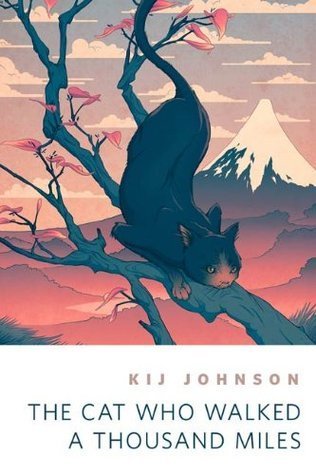
Title: Love/War/Death
Author: Kij Johnson
Series or standalone: series
Publication year: 2000
Genres: fiction, fantasy, historical fiction, romance, mythology
Blurb: Yoshifuji is a man fascinated by foxes, a man discontented and troubled by the meaning of life. A misstep at court forces him to retire to his long-deserted country estate to rethink his plans and contemplate the next move that might return him to favour and guarantee his family’s prosperity. Kitsune is a young fox who is fascinated by the large creatures that have suddenly invaded her world. She is drawn to them and to Yoshifuji; she comes to love him, and will do anything to become a human woman to be with him. Shikujo is Yoshifuji’s wife, ashamed of her husband, yet in love with him and uncertain of her role in his world. She is confused by his fascination with the creatures of the wood, and especially the foxes that she knows in her heart are harbingers of danger. She sees him slipping away, and is determined to win him back from the wild...for all that she has her own fox-related secret. Magic binds them all; and in the making (and breaking) of oaths and honours, the patterns of their lives will be changed forever.
#love/war/death#the fox woman#fudoki#the cat who walked a thousand miles#kij johnson#series#2000#fiction#fantasy#historical fiction#romance#mythology
0 notes